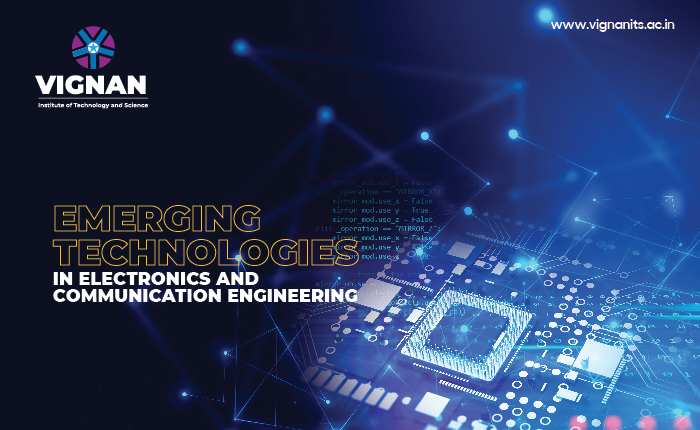Emerging technologies are those that are still in the early stages of development and have limited practical applications. They reflect advancements in scientific domains and serve as a snapshot of progress or advancements in those domains. We’ve curated some of the emerging technologies in Electronics and Communication Engineering, which are no doubt hot topics in any ECE college in Hyderabad.
In signal processing, information processing, and telecommunication, the branch of electronics, in particular, plays a key role. Sensors, diodes, transistors, and integrated circuits are all part of electrical circuits. It refers to complicated electrical equipment and systems, such as current laptops and cell phones, in layman’s terms. Let’s take a look at what the future of electronics may hold.
Flexible Display
Flexible displays are attracting the attention of several consumer electronics makers, who are seeking to incorporate the technology into smartphones and tablets.
One of the most promising electrical visual displays that can be bent is OLEDs on a flexible substrate. Flexible OLEDs use metal and glass panels that are exceedingly thin, light, resilient, and almost shatter-proof.
3D Biometrics
Biometric information is becoming more widely used every year, particularly in industries such as banking, forensics, and public security. Two-dimensional pictures are used in the majority of biometric recognition systems.
However, in recent years, a number of improved biometric approaches have been created. This includes techniques like 3D fingerprints, 3D palmprints, 3D ears, and 3D face recognition. Robust biometrics will be widely used, whether for human-computer interface or better security. To learn more about the field apply for the best ECE college in Telangana.
Spintronics
In solid-state physics, spintronics (or spin electronics) refers to the electron’s intrinsic spin and magnetic moment. It differs from traditional electronics in that electron spins are used to expand the degree of freedom, in addition to the charge state.
Data storage and transfer can be made more efficient with spintronic technologies. The study of neuromorphic computing and quantum computing is particularly interesting in these devices. The technology is also being used in the medical profession to detect cancer, and it has a lot of potential for digital electronics.
E-Textiles
Fabrics incorporated with digital components and electronics to provide extra value to the wearer are known as electronic textiles (or smart clothes). Many other uses, such as interior design technology, rely on incorporating electronics into fabrics. This type of technology is considered revolutionary because it has the power to conduct energy, communicate, transform, and develop in ways that traditional fabrics cannot.
Future smart clothing applications could include health monitoring, troop tracking, and pilot monitoring. This technology can be used for personal and portable physiological monitoring, communications, heating, and illumination.
Molybdenum Disulfide
Because of its low friction and resilience, molybdenum disulfide is commonly utilized as a dry lubricant in electronics. It’s a diamagnetic, indirect bandgap semiconductor with a bandgap of 1.23 eV, just like silicon.
Molybdenum disulfide is a dry lubricant that comes in particle sizes ranging from 1-100 micrometres. It’s utilized to make efficient transistors, photodetectors, two-stroke engines, and universal joints.
Conclusion:
The course offered by ECE college in Hyderabad has infiltrated every aspect of human life, greatly expanding the scope of Electronics and Communication. From your pocket FM radio to televisions, laptops, mobile phones, and even high-end satellites, electronics have become an integral part of our daily lives.

